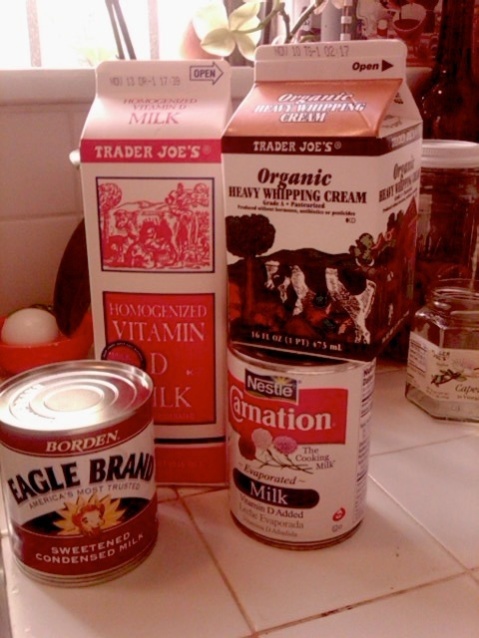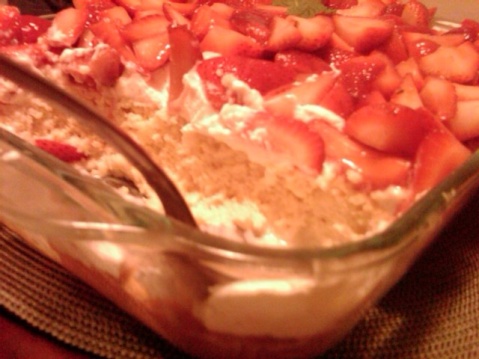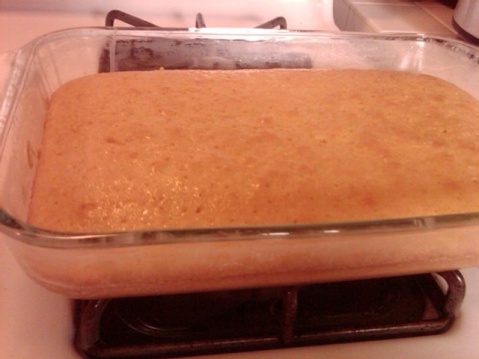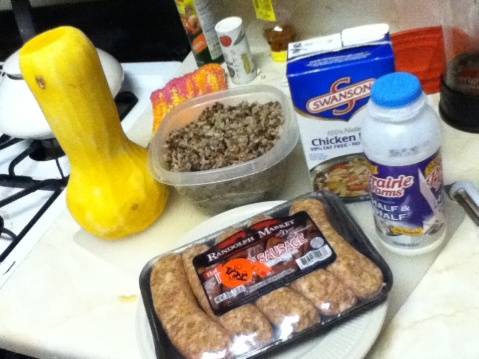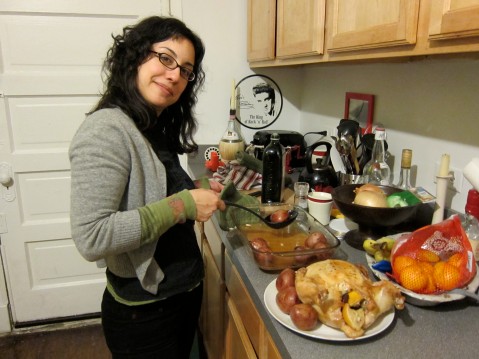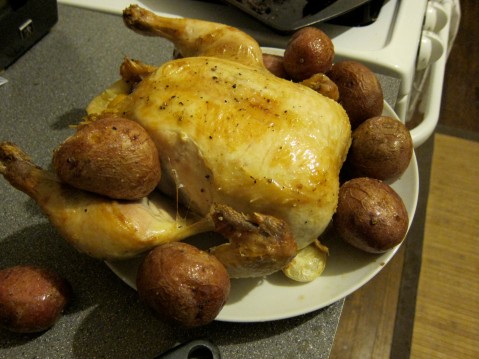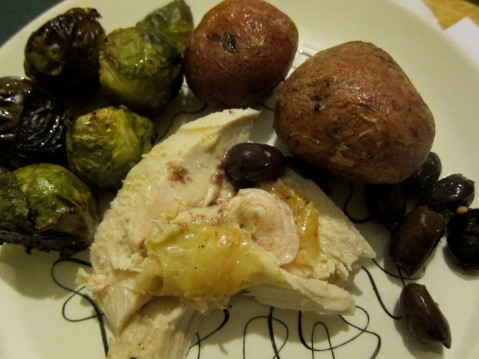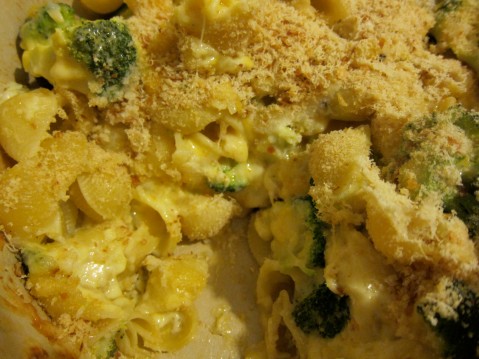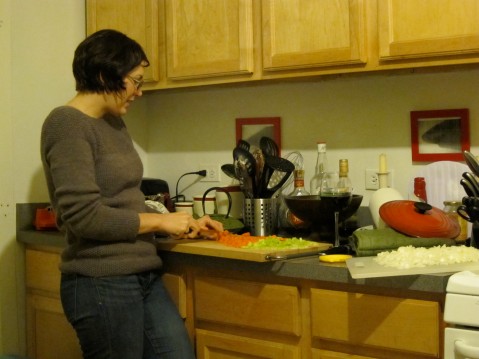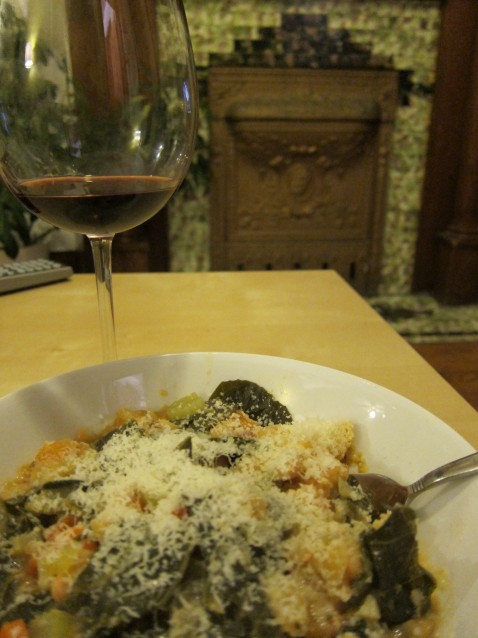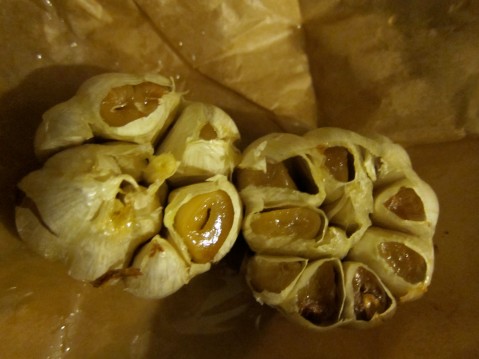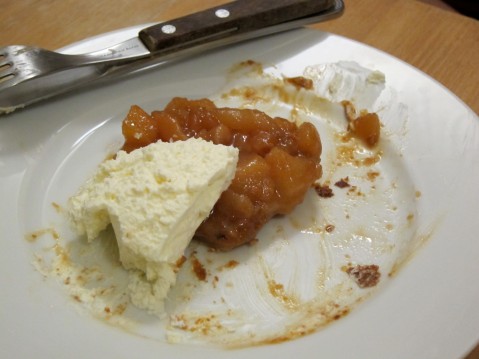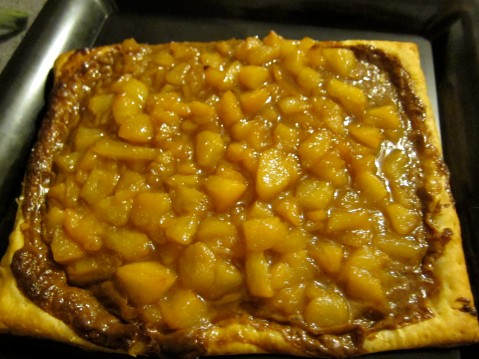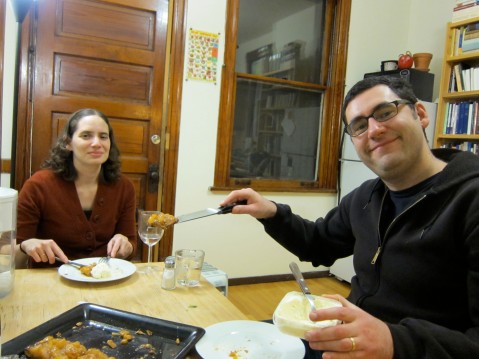Buttermilk Biscuits

Gilt church domes and brick three-flats and water towers. The 90/94 and Ozinga trucks. The sounds of buses announcing stops. Wooden decks. Telephone wires. The skyline in the distance beyond rooftops. Dead prairie grass pushing up through snow. The smell of brownies on Des Plaines. Frozen lake. Frozen face. El platforms. Alleyways. A city I never wanted, never thought I’d love so well. A city that, for years, made me feel trapped indoors for six-month stretches at a time and made me cling to my kitchen for something to control. A city that made me a cook. While the city and the winter and circumstances were overpowering me, I was making pot pies. Roasting chickens. I’ve always loved to cook, but this is the first place that’s made me need it.
When I moved here, I knew no one. Had no job, no money. But, during my very first week, I met Siggy. She was Celeste’s friend, had also moved here from New York and wasn’t sold on the Midwest yet either. Through Siggy, I met Sara. And the three of us (and often Patty, Sara’s sister) very shortly started a ritual of cooking and Project Runway every Wednesday night. Many weeks, it was the only thing that I had to do outside of my apartment. Siggy and Sara and our meals got me through that hard winter, when I was so cold and so depressed.
I guess this is just to say that cooking means a lot to me–taking care of myself; but also friendship, a way that people take care of each other.
It is also to say: Is there anything that butter can not do? Sure, it’s a stretch to say it’ll save your life, but it’ll no doubt make it a hell of a lot better. These biscuits taste like baked butter, and there’s an extreme satisfaction in the act of rolling them out, frosting them with melted butter and sea salt, and letting your whole apartment swell with the smell of them while they’re in the oven.
Buttermilk Biscuits
from foodnetwork.com, Guy Fieri
1/2 c. unsalted butter, cold, plus 1 tbsp.
1 1/2 c. cake flour
1 3/4 c. all-purpose flour, divided, plus more for work surface
3 tsp. baking powder
1/2 tsp. baking soda
1 1/2 tsp. sea salt, divided
2 tbsp. shortening, cold
1 c. buttermilk
Cut 1/2 c. of butter into 1/2-inch pieces and refrigerate it along with the shortening. In the bowl of a food processor, fitted with the steel blade, pulse together the cake flour, 3/4 c. of the all-purpose flour, baking powder, baking soda, and 1 tsp. salt. Add the butter and shortening and pulse to combine, until small crumbles are present, 6 to 8 times. Add the buttermilk and pulse until a dough ball forms, about 5 to 6 times.
Dust a dry work surface with flour and have the remaining 1 c. ready for kneading. Turn the dough out onto the floured work surface. With floured hands, gently press the dough out into an 11-by-8-inch rectangle, about 1/4- to 1/2-inch thick. Dust lightly with flour and gently fold it over in thirds, like a letter. Roll or press out to a 6-by-6-inch rectangle again about 2-inches thick. Cut the dough into 9 squares (2-by-2-inches each) with a pizza cutter. Transfer the biscuits to a parchment paper-lined baking sheet about 1/2-inch apart. Cover loosely with plastic wrap and let them rest at room temperature for 15 minutes.
Preheat oven to 500 degrees. Melt the remaining tbsp. butter and brush tops with melted butter, then sprinkle with the remaining 1/4 tsp. of sea salt.
Place baking sheet in the middle of the oven and immediately turn oven down to 450 degrees. Bake for 12 to 16 minutes until they are golden brown. Remove biscuits to a wire rack to cool for a few minutes.
(Guest Blogger) The Baketrix: Tres Leches Cake
Pauline, today’s lovely guest columnist, is teasing me with this amazing-sounding cake. Pauline, please FedEx this to Chicago. Better yet, come visit and make this for me.
The Baketrix:
My friend and new mommy Sarah Cifarelli (as of Dec 2010) made this amazing Tres Leches Cake for a potluck dinner with the Gurls. It was so delicious. Now, I truly enjoy desserts, but usually tres leches cakes are so dense and sickening sweet, I can only eat a small piece. Well, Sarah’s recipe is rich in flavor yet light in texture. Instead of weighing me or my plate down, I was truly uplifted by it. I had a huge, and I mean HUGE, slice!!!!
Tres Leches Cake Recipe
serves 12 or less depending on how big you make the servings!!!
1/2 c. butter (1 stick) melted and cooled, plus more for greasing the baking dish
1 1/2 c. all-purpose flour
1 tsp. baking powder
1/2 tsp. coarse salt
5 large eggs
1 c. sugar
1 tsp. pure vanilla extract
1 can (14oz) sweetened condensed milk
1 can (12 oz) evaporated milk
1 c. whole milk
2 c. heavy cream
5 c. fresh fruit, optional, such as oranges or berries, for serving
Preheat oven to 350 degrees.
Lightly butter a 9×12-inch baking dish. (Note: if using a metal pan, keep an eye out on the cake as it will be done in less time.)
In medium bowl, whisk together flour, baking powder, and salt.
In a large bowl, using an electric mixer, beat egs and 3/4 c. sugar on high until pale and thick, about 4 minutes. Add vanilla and beat to combine. With mixer on low, gradually add flour mixture and beat to combine. With a rubber spatula, fold in melted buttah until incorporated. Transfer batter to dish and back until top is golden brown, about 30 to 35 minutes.
In a medium bowl, whisk together milks. Poke warm cake ALL over with a wooden skewer or toothpick, then pour milk mixture over the top and let it cool to room temperature, about 1 hour. The cool part is watching the milks get absorbed into the cake – like magic!
Whip cream and 1/4 c sugar to medium peak, add to the cake and add fruits and eat up!!!!
Rachel’s Cilantro-Mint Chutney and Raita
Here are Rachel’s recipes for the yummy chutney and raita. Enjoy!
Cilantro Mint Chutney
Adapted from Madhur Jaffrey
Time: 5 minutes
6 tbsp. plain yogurt
2 tbsp. mint leaves
¼ c. cilantro leaves and stems
1 tbsp. lemon juice
1/2 tsp. sugar
2 dashes cayenne pepper, or more to taste
¼ tsp. salt, or more to taste
Combine ingredients in a blender or a small food processor and process until smooth, scraping down sides of bowl once or twice. Taste for salt and cayenne, adding more as needed. Refrigerate up to 2 days. Taste for salt and cayenne before serving.
Gujarati Cucumber Raita
from Madhur Jaffrey’s The World Vegetarian
1 c. plain yogurt
1/2 tsp. salt
½ tsp. sugar
1/8 tsp. cayenne
1 medium cucumber, peeled and grated
1 tbsp. peanut or canola oil
½ tsp. brown mustard seeds
¼ tsp. cumin seeds
Put yogurt in bowl and beat lightly with a fork.
Add salt, sugar, cayenne and mix. Add grated cumcumber and mix again.
Set oil over medium-high heat in frying pan. When hot add mustard and cumin seeds. As soon as the seeds begin to pop pour mixture into yogurt mixture, then stir. Serve chilled.
Bollywood on Ice
Indian has long been one of my favorite cuisines, ever since my days as a waiter at the Electric Lotus in Los Feliz, where I learned the ins and outs of the northern Indian menu (at least, well enough for tableside menu-advising), waited on celebrities, and spent six months trying (in vain) to wash the smell of curry from my hair.
As an eater, I love it–it’s spicy and boldly flavored, vegetable-centric, and when you smoosh it all together, it tastes even better (I am the opposite of the food-on-plate segregators; the more you can mix things up on mine, the better). But it has always intimidated me terribly as a cook. A few months ago, Rachel gave me a cookbook called Dakshin: Vegetarian Cuisine from South India. I can follow directions well enough, so I figured this was my chance to attempt to master the elusive object of my culinary desire. What better way to warm up an icy cold Chicago night than with some spicy fare and a few friends in a small apartment? So, I stocked up on supplies at Devon St., and invited a few friends over this weekend for an impromptu feast.
The results were quite tasty, though a few lessons were learned: 1. Asofoetida powder is the stinkiest concoction on the planet. It should be stored in multiple layers of tupperware in the upper reaches of your cabinets. 2. You should figure out what all the directions mean before you begin. (I sort of ended up skipping the ones I didn’t understand–tempering?–and adding a few extra steps of my own.)
Johanna was my partner in crime, and made lovely yellow dal and saag aloo—recipes from her to come. Rachel made raita and cilantro chutney. Likewise, I will post those when I have them. For now, I am posting the recipes to the dishes I made, which will get you started on this Bollywood feast.
Revisionist Plantain and Chickpea Poriyal
Adapted from Dakshin: Vegetarian Cuisine from South India
3 tbsp. tamarind concentrate
1 ripe plantain
2 cans chickpeas, drained and rinsed
1/2 tsp. ground turmeric
salt to taste
2 tsp. oil
2 green chili peppers, slit sideways
1 tbsp. curry powder
2 tbsp. flaked coconut
1 tsp. cumin seeds
1 red chili, halved
1 red bell pepper
1 banana pepper
1/4 tsp. asafoetida powder
a few curry leaves
coconut milk
buttermilk
Place plantains, chickpeas, tamarind, turmeric, and salt in a bowl and set aside.
Heat oil in a heavy sauce pan. Add the mustard seeds, cumin seeds, chili, asafoetida powder, a few curry leaves. When the mustard seeds start do sputter, add all the peppers and chilis and saute until tender.
Add the chickpeas and plantains. Add curry powder and coconut, then coconut milk and buttermilk. Simmer for 15 to 20 minutes.
Vegetable Pullao
Adapted from Foolproof Indian Cooking by Madhur Jaffrey
1 1/2 c. basmati rice
3 tbsp. olive oil
1/2 tsp. mustard seeds
1 hot green chili, finely chopped
1 carrot, peeled and diced
1 c. green peas (I used frozen)
1/2 tsp. ground turmeric
1 tsp. garam masala
1 tsp. finely grated fresh ginger
1 1/2 tsp. salt
2 c. water
Wash the rice in several changes of water, then drain. Put it in a bowl, cover with water, and leave to soak for 30 minutes, then drain again.
Add the olive oil to a heavy pan with a tight-fitting lid, and set it over medium-high heat. When it is hot, add the mustard seeds. As soon as they begin to pop (a matter of seconds), put in the chili, carrots, turmeric, garam masala, and ginger. Saute for one minute.
Reduce the heat to medium-low and add the drained rice, salt, and peas. Cook the rice gently for 2 minutes.
Add the water and bring to a boil. Cover the pan with the tightly fitting lid and turn the heat to very low. Cook for 25 minutes.
Rice Pudding
Adapted from Aphrodite by Isabel Allende
1 c. basmati rice
4 c. warm water
10 c. milk
2 cinnamon sticks
2 1/3 c. sugar
1 lemon zest
cinnamon and shredded coconut to garnish
Soak the rice in the warm water for 30 minutes. Drain. Cook the rice with the milk and cinnamon sticks until the rice begins to soften, about 30 minutes. Add the sugar and lemon zest, and simmer over low heat, stirring occasionally, for about 45 minutes, or until mixture thickens. Cool in the refrigerator before serving. Garnish with a dash of cinnamon and shredded coconut.
(Guest blogger) The Soupista: Butternut Chowder
My back porch window was iced over this morning in the most delicate and lovely pattern, like tall dandelions in fluffy fields. Fog rolled out from under cars in rows on the freeway, and rose up off of the lake along Lake Shore Drive. How visually pleasing winter can be! I passed the bank’s weather/time display this morning on my way into work, and it said that the temperature was -2. My first thought was not, “What crap!”, but “That can’t be right, it’s not that cold!” How’s that for Chicago indoctrination?
Below, I’m posting a long-overdue Soupista post from Jen. Enjoy! And stay warm!
Some people say that necessity is the mother of invention. Tonight, I think laziness was creation’s matriarch. As in, I was too lazy to visit the store. Which is literally two blocks away.
Not wanting to leave the comfort of my fuzzy ducky socks, I found myself investigating the fridge like an overzealous CSI tech (wearing fuzzy ducky socks), dusting every inch of Gladware for possible dinner suspects.
Unfortunately, the forensic approach to cooking, like so many partial fingerprints, doesn’t always leave you much to go on. My “investigation” turned up: one sort of big butternut squash, two cups of cooked wild rice, and a questionable package of Italian sausage. Oh the possibilities.
Since I like soup anyway (and Kate, my cooking muse, suggested it), I decided to turn these ragtag ingredients into a sort of liquid-based dish that could be eaten with a spoon. Besides the main culprits, I obtained (by totally legal methods) the usual suspects like chicken stock, garlic, onions, canned corn, and—why the hell not—half & half.
As I saw the ingredients lined up on my counter, and after a thorough sausage sniff test, I knew this wasn’t going to be any old soup or stew. It was going to be a chowder. A butternut chowder. I was getting excited to start, but also felt a bit worried that my creation would turn out as something more aptly named “Butt-nut Chowder”, and my roommates just wouldn’t appreciate that.
It was slow going at first. Fumbling around with the ingredients, I felt a bit like Reed Farrington in Cooking with Gerry (http://www.youtube.com/watch?v=GGUybwNhFVU&feature=related). But after a few shakes of spice here and a half cup of cream there, I finally had my answer: Ms. Soupista. In the Kitchen. With the Immersion Blender.
The chowder turned out well. The world was safe again. And with this hearty number, the fuzzy socks were warm as ever.
Butternut Chowder
Serves 6-8
1 lg. butternut squash
½ head garlic, skin on, tops cut off
4–5 c. chicken stock
2 tbsp. olive oil
1 med. onion, diced
1 1/4 lbs. Italian sausage, cases removed
1 1/2–2 c. cooked rice (wild or otherwise)
1 can sweet corn, drained
Italian seasoning, sage, salt, red pepper, nutmeg
Romano or Asiago cheese (optional)
Preheat oven to 375.
In a roasting pan, drizzle peeled and gutted squash with olive oil and whatever spices you want. Pour in about 1 c. of chicken stock. Roast squash and garlic for about 45 minutes or until tender. *I positioned the garlic in the butternut cavity, to try and infuse it with more garlic flavor—it seemed to work well.
While squash is cooking, sweat onions and red pepper in sauce pan. Add sausage and cook until brown. Drain excess fat. Return to heat and add about 1–1 1/2 c. rice to meat mixture, stirring until thoroughly heated.
Cut roasted squash into chunks. Remove skins from garlic cloves. Place both in stock pot with 4 C chicken stock. Blend with immersion blender until smooth. Add meat and corn to squash mixture. Let simmer on low heat for 15 minutes. Stir in half & half or heavy cream. Allow to sit for 5 minutes before serving. Garnish with shredded cheese, if desired.
Broccoli Mac and Cheese
I can’t believe I’m saying this because I know it’s going to come around to bite me, but I might actually like winter. Right now, at least. Kasia’s biggest complaint over the weekend seemed to be a cold nose, and perhaps mine has reached its peak seasonal numbness. Sure I’ve been sick for several weeks and my skin hasn’t seen the light of day in months. And, true, I got pelted in the face with sideways sleet yesterday. I know it’s going to get colder (high of 10 degrees F on Friday, for instance). I’m just saying, I feel, perhaps, ready for it.
My mom was born in Peoria, and her family, like many from the Midwest, fled Illinois for the mountains and sunshine of LA in the forties after WWII. My grandmother was a painter and fell in love with the striking pastels of the western landscape. (She also wanted to get my grandpa away from his drinking buddies, though apparently that plan backfired when the loneliness of a new place set in.) And I certainly can understand the allure of the west; there just isn’t much nature in Chicago, and I often find myself craving it. In LA, streets have to go around hills and canyons; there’s a constant struggle between the built land and the natural environment. But here, the landscape has been completely conquered. This is why, I think, the weather has become such a character to me. It’s the only wild thing to contend with.
I find myself thinking more about gray in Chicago than I ever did anywhere else. There are layers upon layers of it: cement, slush, trucks, steel, eroded bridges, potholes–and not much to break it up. The first few years here, the grayness got to me completely, and I could hardly bear it by March. It’s also when I started cooking really intensely. I’ve always cooked, since my first house in college. But something about the Midwest winter and the combination of factors that brought me here made the kitchen my haven. Cold outside, warm oven inside. Exasperating life, delicious kitchen.
Mac and cheese is one of those meals that is a haven in and of itself. This version is so packed with flavor–shallots and garlic flavor the roux, broccoli parboils in the water before the pasta, so it infuses the pasta with tastiness. It’s a comforting, indoor, winter food. (Plus, it has veggies so it’s…good for you.)
At a lecture last week, the poet Susan Stewart talked about the difference between art and craft, and suggested that a thing is a work of art if the maker enters the project without knowing exactly where it will go. The sense of indeterminacy. Cooking seems to skirt the line of both. My favorite thing about cooking is improvisation. The longer I work at it, the more confident I am in experimentation–which is how I get to most of my recipes. But ultimately, you know what you want to come of the project; there are familiar shapes and tastes that it needs to resemble. You want the carbs and cheese to offer a certain nostalgia, maybe a sense of home. You have certain expectations for the dish. But you want surprises. You want it to smell good and feel good and excite your mouth. You want it to scream Look at what I can do! What I can taste like! I’m not sure if it’s art, but it is a small piece of excitement at the end of a day, especially a cold, gray one.
Broccoli Mac and Cheese
2 heads broccoli, chopped
1 lb. short pasta, I used shells
1/2 stick butter
2 shallots, peeled and diced
2 garlic cloves, peeled and diced
salt and pepper
3 tbsp. flour
1 c. milk
1 brick havarti, shredded
4 oz. cheddar, shredded
breadcrumbs and parmesan for top
Preheat oven to 350 degrees.
Bring a pot of salted water to a boil. Parboil the broccoli for a minute and remove from the water with a strainer. Add the pasta to the broccoli water and cook until very al dente. Strain and set aside.
Over medium heat, melt butter and saute shallots and garlic with a bit of salt and pepper until they are soft and transparent. Add the flour and mix well. Whisk in the milk until all the lumps are combined and there’s a creamy texture. Add the shredded cheeses and just melt.
In a dutch oven or a very large casserole dish, combine pasta and broccoli. Pour the cheese sauce over it and combine thoroughly. Top with breadcrumbs and parmesan and bake for 35 minutes, until bubbly and browned on top.
Winter Ribolita
Winter Ribolita
from SF Gate
Roasted Garlic and Spinach Soup
I have been battling a nasty cold for over a week, and I suspect you have, too. Everyone in Chicago seems to be sick. I made this soup for myself a few days ago because I wanted something warm and comforting that would pack in tons of garlic and vitamin C, and not involve too much of the getting out of my sick bed.
Why, I ask you, does chicken soup have the market on cold-curing fame? Is it something specifically about chicken or is it just the heat of the soup? I suspect that a warm soup such as this one, packed with vitamin-rich foods would do the trick just as successfully. Plus I didn’t have any chicken.
I happened to have some of Rachel’s amazing preserved lemons on hand, so I threw them in for some punch. If you don’t have a stash of preserved lemons or a Rachel available to make you some, you could use regular old lemon zest and lemon juice.
I love roasted garlic, but I should warn you: be prepared with a pack of gum on hand after you eat this. This is not a first date soup.
I tasted and added flavors here and there, and ended up with a phosphorescent radioactive green hue. Gorgeous and strange. But it certainly helped the sick move along, and didn’t involve much of me standing over the stove. It was mighty tasty, too.
Roasted Garlic and Spinach Soup
olive oil
1 head of garlic
10 oz. of spinach
2 preserved lemon peels (or zest and juice of one lemon)
1 leek
1/4 stick butter
2 tbsp. whole wheat flour
salt and pepper
1/4 tsp. nutmeg
16 oz. veggie stock
1 can cannellini beans, rinsed
1 c. milk
Preheat oven to 400 degrees. Cut off top of garlic head, with cloves still in tact. Drizzle olive oil over it. Loosely wrap in parchment paper. Roast for 45 minutes until squishy.
In a food processor, blend roasted garlic cloves (minus skins), spinach, lemon peel, salt, pepper, nutmeg, and a few teaspoons of olive oil until blended.
Over medium heat, melt butter and saute leeks and salt and pepper until soft. Add the spinach mix. Coat with flour and mix well. Add beans. Pour in veggie stock and bring to a boil. Lower heat to simmer and cook for about 30 minutes.
Add milk and adjust seasonings as needed. Serve with cheesy croutons, or a generous hunk of crusty bread.
Pear and Dulce de Leche Tart
Good morning, and a good new year to you. I’ve eaten my lucky new-year black-eyed peas (thanks, Garen), and I am feeling optimistic for the year of lucky number 11. I was listening to this song this morning, and have declared it the perrrrrrrrfect anthem to start the year:
After such a sucky 2010, I think most all of us could use a little luck. Or at least a little feeling good. What better thing to eat in a lucky new year than a luscious pear and dulce de leche tart? New year diet? Bah! It has fruit, so it’s not all that bad for you. And besides, I’m a believer in eating well enough all year and not cramming it in to some guilt-packed resolution. Diet be damned. Eat some of this.
To start the year with a little inspiration, I’m reading Julia Child’s My Life in France (thanks, Melissa), and I love, love, love her exuberance. I know she had a memorable, infectious personality in real life, and it comes forth completely on the page. Here’s to a new year with even a fraction of her vigor.
I made this tart to accompany a borscht dinner by Josh and Rachel back in December. I almost went with chocolate ganache instead of dulce de leche, but I saw the can in the supermarket and I couldn’t resist. Is there anything better? Sweet, sweet, creamy goodness. I whipped up some heavy cream with sugar and vanilla for a delicious topping. It’s easy to make and, really, what doesn’t taste good on top of puff pastry?
I’m in the mood to feed people, so come on over.
Pear and Dulce de Leche Tart
6 to 7 pears, peeled and chopped into 1/4″ chunks
juice and zest of 1 lemon
2 to 3 c. apple cider
2 tsp. ground ginger
2 cinnamon sticks
1 sheet of puff pastry
3 to 4 tbsp. dulce de leche
Preheat oven to 350 degrees. Bring puff pastry out of the freezer to thaw, about 10 minutes.
In a pan over medium heat, combine pears, lemon juice & zest, cider, ginger, and cinnamon. Reduce until it becomes a thick compote. Set aside.
Spread dulce de leche in a nice, thick layer on the puff pastry. Spread the pear compote on top of that. Bake for about 20 minutes, until the pastry is brown and toasty and cooked through.



